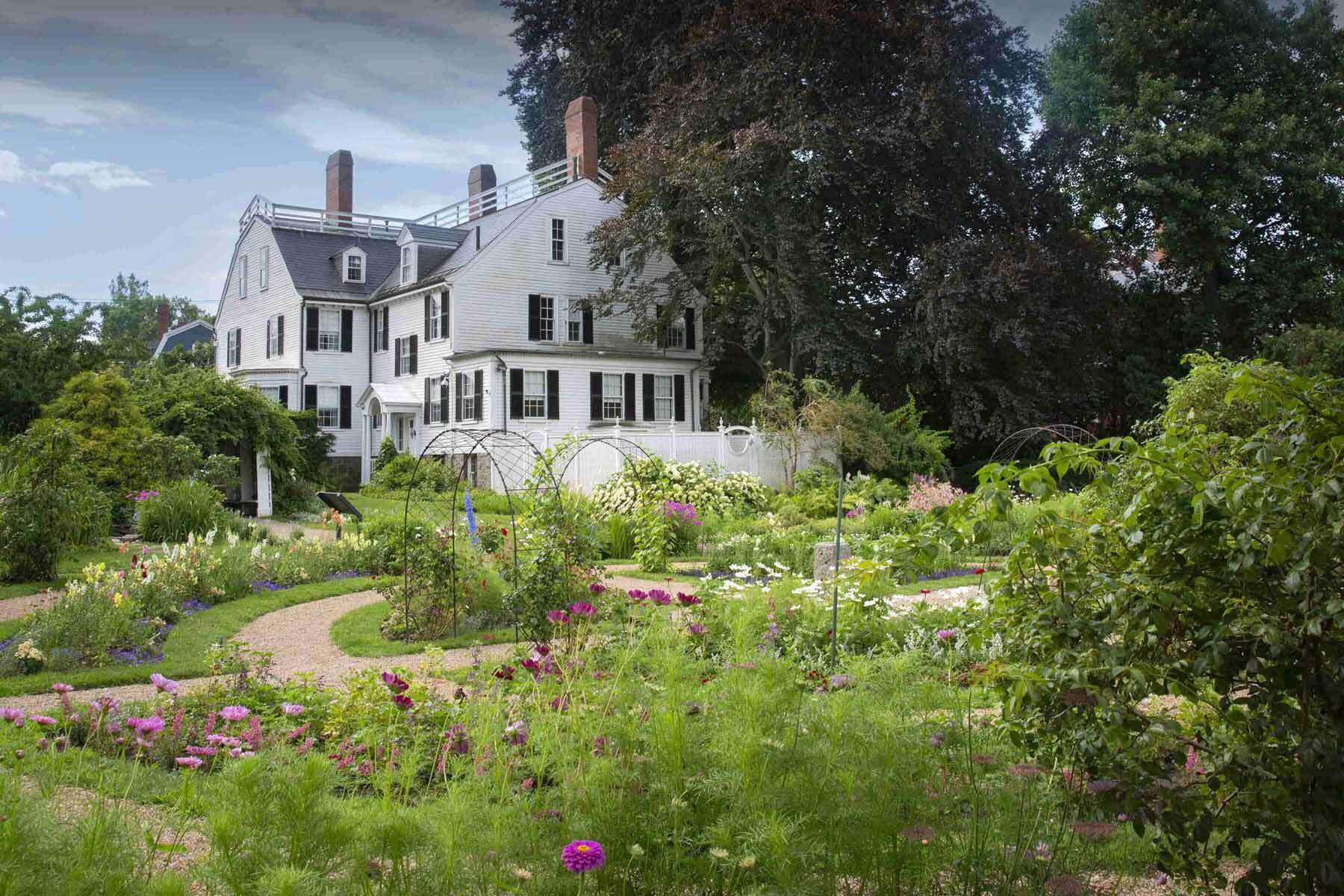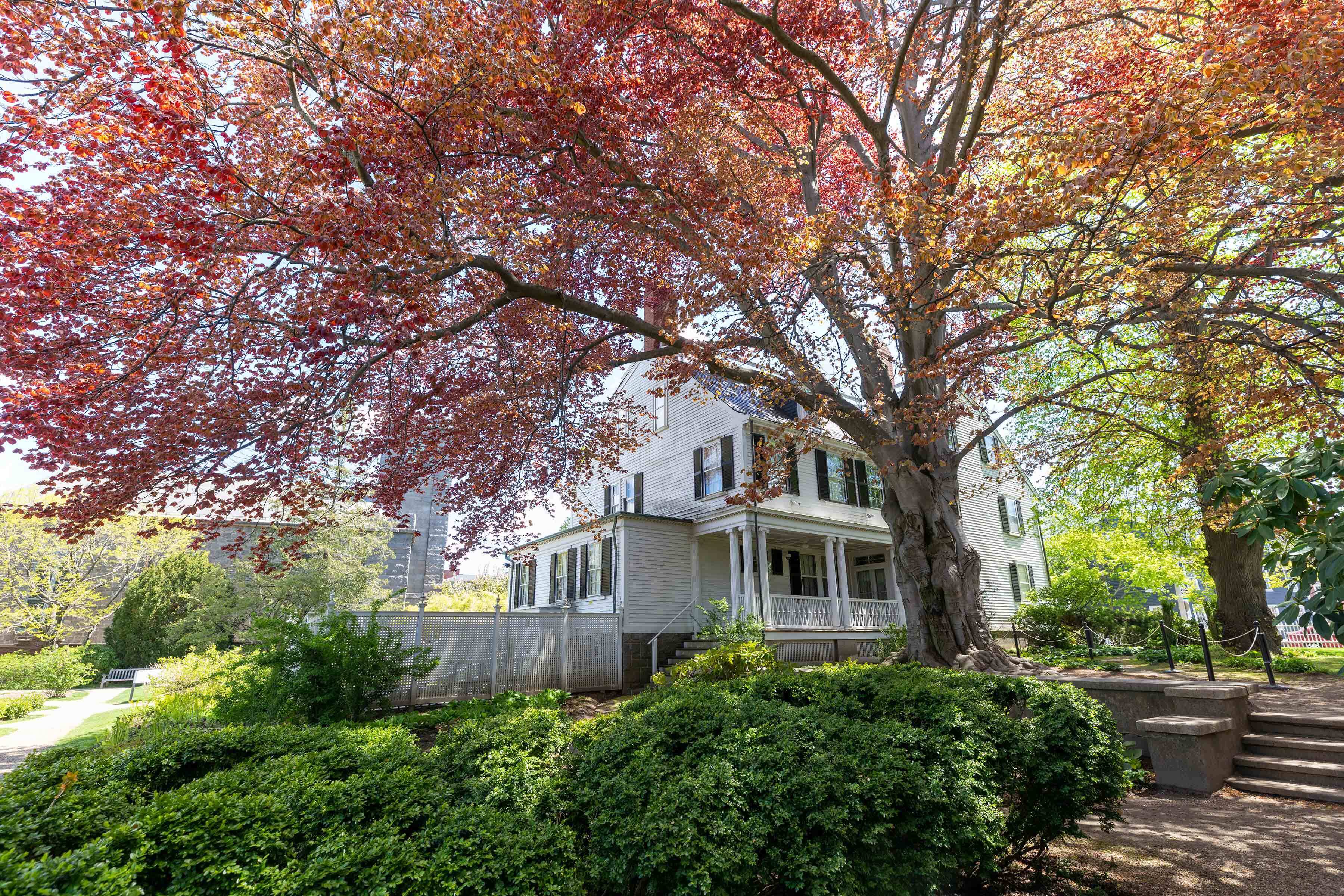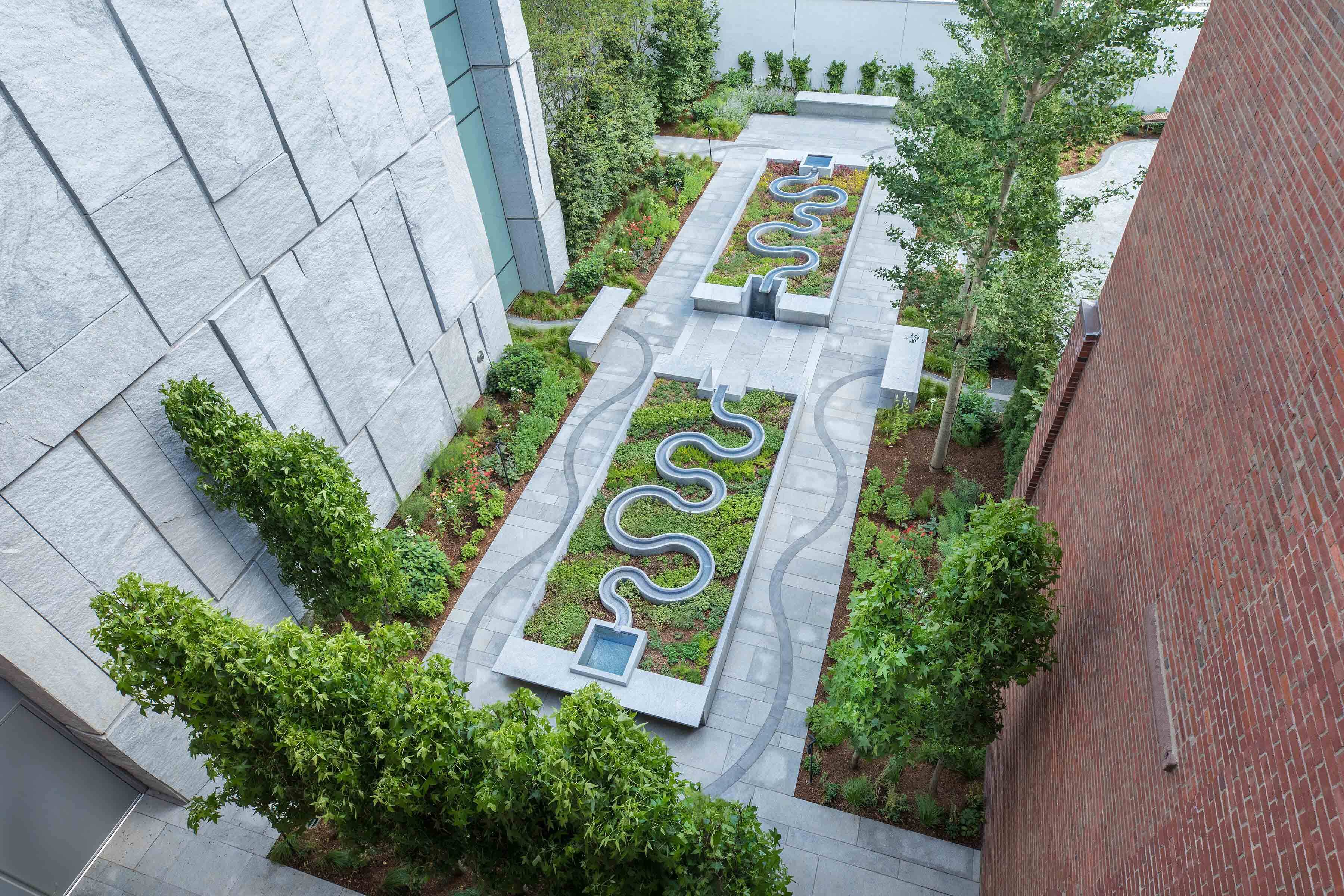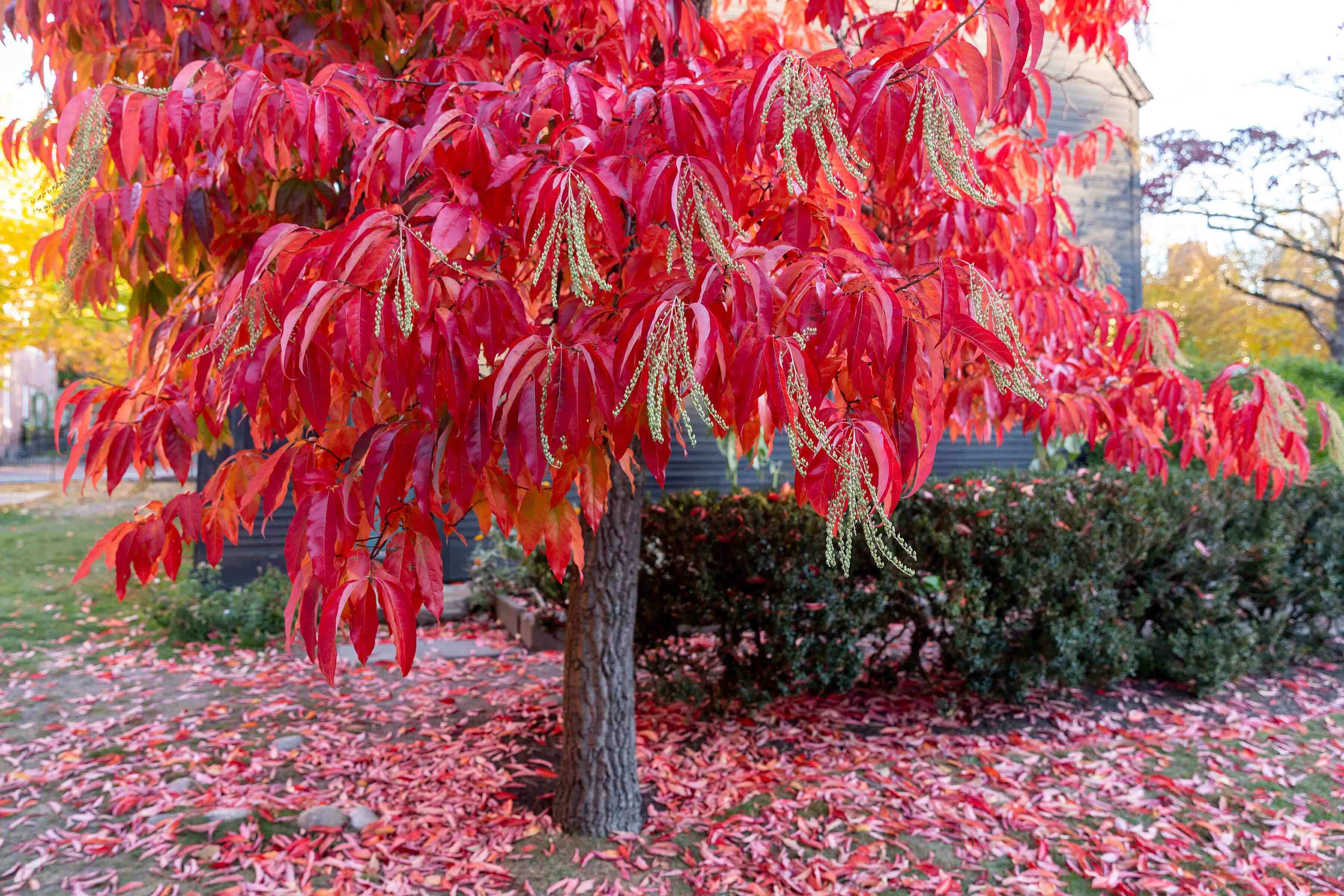
CONNECTED | Oct 22, 2025
Tree trekking around PEM’s campus with our Horticulture and Grounds team
“This is Oxydendrum arborensis,” Robin Pydynkowski, PEM’s Manager of Horticulture and Grounds, says with a grin, showing off a tree that most non-gardeners might call a sourwood. “We like the names.”
This particular tree is situated among three historic houses on PEM’s main campus. “They're very slow-growing. And they have a massive root system,” Pydynkowski says. “If you go to move it, be prepared, because it's twice the size of a normal root ball. But it's a great specimen tree. I think they're fairly long-lived.” In the fall, this tree will go scarlet. “You get a burgundy wine-colored leaf with the calyx of the seed pods remaining persistent on the tree. It's just beautiful.”
The sourwood is native to the southeastern United States, most common in the lower part of the Appalachian Mountains. But here, on this tree trek of PEM’s campus, a newly designated Level 2 arboretum where you can find hundreds of trees, we’re dubbing this the best tree under which to enjoy a book.
Sourwood tree (Oxydendrum arboreum) in autumn next to the John Ward House, 2024. Peabody Essex Museum. Photo by Kathy Tarantola/PEM.
As we entered the busy fall season in Salem, we asked Pydynkowski, horticulturist Katie Sponholtz and arborist Patrick Cheney to show us some tree highlights on the four-acre PEM campus in downtown Salem and in Salem’s McIntire Historic District. Another 5.3 acres in Rowley at the James B. and Mary Lou Hawkes Collection Center completes PEM’s arboretum.
“Where else can you go from the 17th century to the 21st, be it by historical architecture or plants?” asks Pydynkowski. “And they work well together.”
Museum visitors can take their own tree trek at PEM by finding QR codes around campus that lead to the arboretum information on our website, featuring several significant trees. This winter, the team will be working on adding a tree plotter that identifies the location of each arboretum specimen.
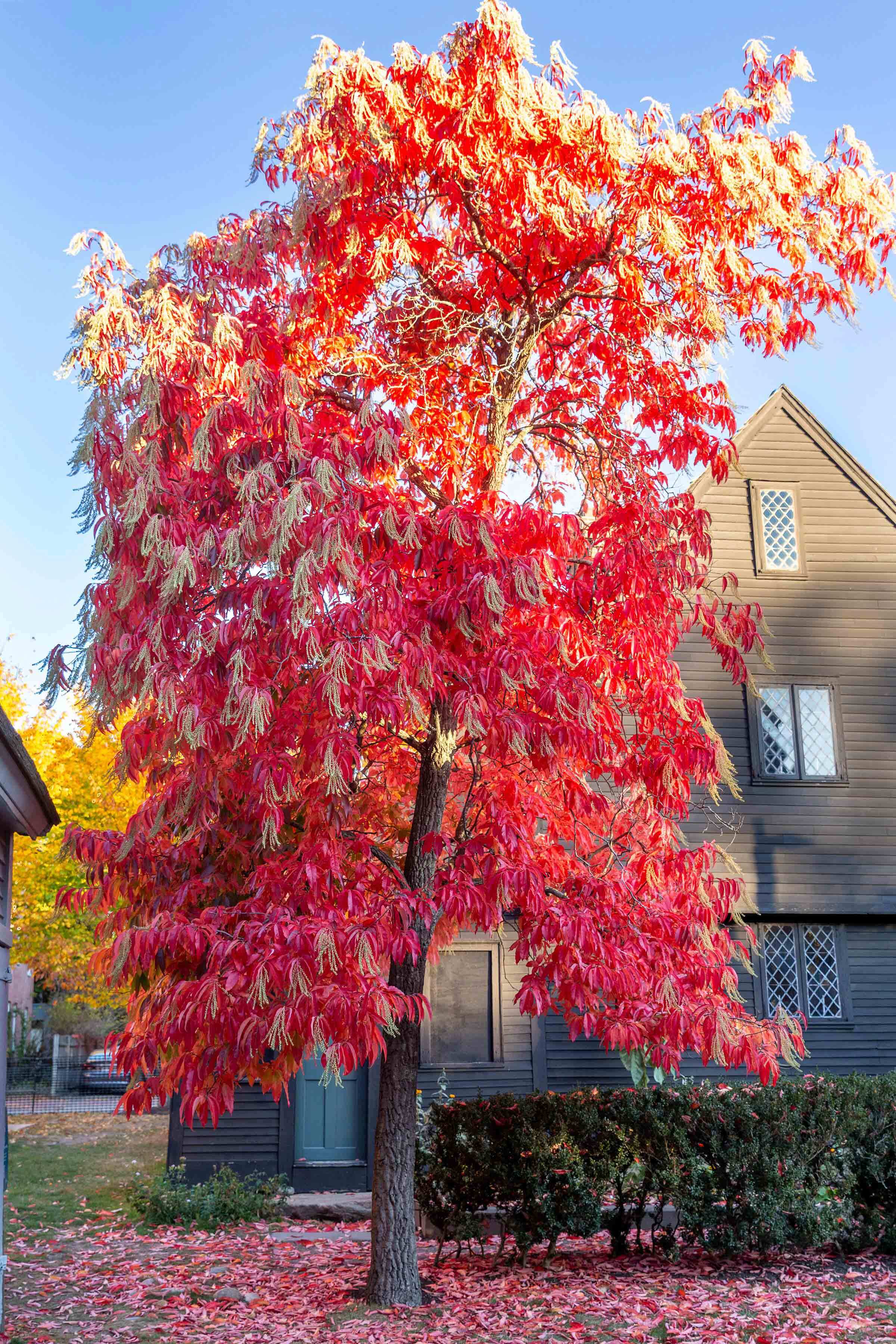
Sourwood tree next to the John Ward House. Photo by Kathy Tarantola/PEM.
We traded our office computers for fresh air to meet up with the crew in their potting shed headquarters, adjacent to the 1916 greenhouse on the grounds of the Ropes Mansion. We talked about rain, the desire for it, what kind of summer it has been and what kind of winter we can expect. The horticulturalists paused at one point to give a dog treat to a gentle big blonde neighbor they all knew by name as Moby.
Salem tourists often chat with our gardeners, sharing their own methods for their climates at home. “It's always a fun aspect: Literally every single year, we learn something new in this green space,” says Sponholtz. “People are always curious. They'll ask questions about the flowers and we totally welcome it. It's fun to talk about. We spend so much time planning it. Today we got asked if we have a Mayflower, which is a very touristy question. But I thought that was kind of cute.”
We also discussed how the excitement of receiving the arboretum certification a year ago still hasn’t worn off. “There has been an uptick in the awareness that PEM is the steward of a great amount of green space in an urban setting and that we take the care of it very seriously,” says Pydynkowski.
Copper Beech tree at Ropes Mansion, 2024. Photo by Kathy Tarantola/PEM.
Patrick Cheney, a horticulturalist and certified arborist, has worked on the trees on PEM’s campus since the 1980s. “I actually walked in one day and they said, ‘guess what we're doing?’ The idea being, this is a living collection,” he says. “We're going to be part of the museum. And we want to make sure that people get the fact that these are part of it as well. John Robinson put this stuff here for a reason.”
John Robinson was the botanist who plotted out and planted the Ropes Mansion Garden, on Essex Street in the McIntire District, in 1912. Many of the plants came from Harvard University's Arnold Arboretum in Jamaica Plain. The arboretum designation means more resources to take better care of the trees. Cheney is thrilled to be part of that, to steward these century-old living treasures along.
“And it's our job to take care of it now,” he says. “So, here we go.”
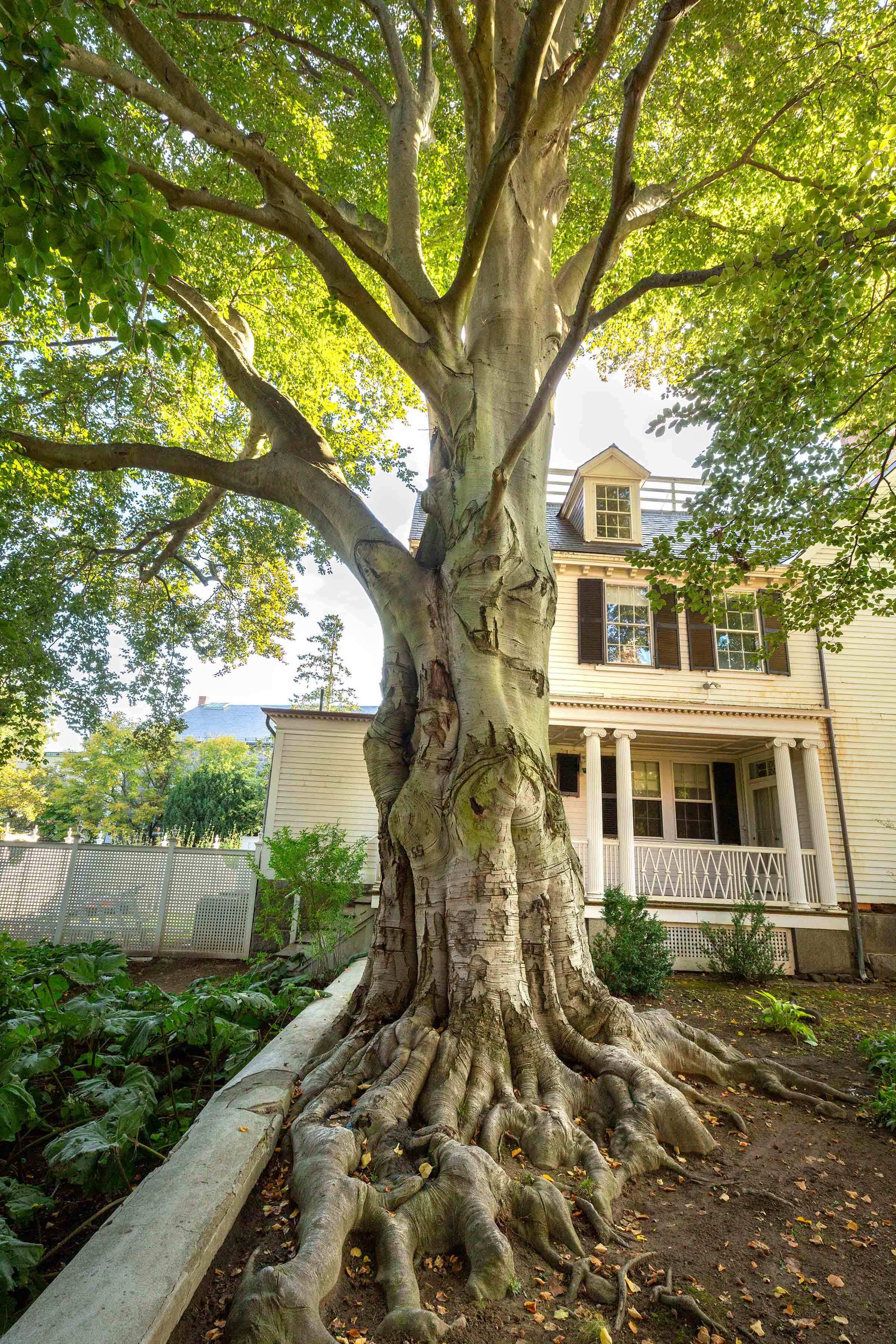
Copper Beech tree at Ropes Mansion, 2024. Photo by Kathy Tarantola/PEM.
And that includes the 100-year-old copper beech tree at the Ropes Mansion, which just received some good news. About four years ago, the PEM team discovered that this tree had a fungal infection called gianoderma. But, this year, tests revealed the fungus has stopped progressing.
“There is no cure for it,” says Pydynkowski. “But so far, we've been holding it back. That branch right there actually has a pocket of water in it that's a foot deep. And perhaps that's part of the reason it's holding the fungus back.”
The garden team has also installed ropes and signs, urging the tree's admirers to remain a few steps back. The recent good news of no disease means that the tree, planted in 1913 and attracting people ever since, does not currently have to come down. The beech was probably given to John Robinson by Charles Sprague Sargent, the first director of the Arnold Arboretum, as part a gift of 91 woody plants for the Ropes Garden alone. The tree is visible as a ten-year-old sapling in an archival photograph.
Next, after admiring the fall flowers in Ropes Garden, waving lazily in an ever-crisping breeze, we walked together to Axelrod Walkway next to the museum. Because of PEM’s connection to global trade in East Asia, you will find quite a few trees from Asian countries on our campus, including ginkgos, katsuras and a dawn redwood, a deciduous conifer that originated in China and reaches about 50 feet into the sky. Dawn redwoods are so highly prized that they are under strict legal protection in China and may soon be extinct in the wild except for mature specimens. These trees are a popular planting in arboreta and botanical gardens across the world.
“Look at how they hold their branches and put their feet in the ground. They're wonderful. And they get huge,” says Pydynkowski.
There are also things growing on the PEM campus that might come as a surprise. “Nobody expects the pumpkins,” says Sponholtz. “You could call it permaculture because we have sour cherry, quince and some apples on the back of the brick fence. We do the Three Sisters method over at the John Ward House because it's historically accurate.”
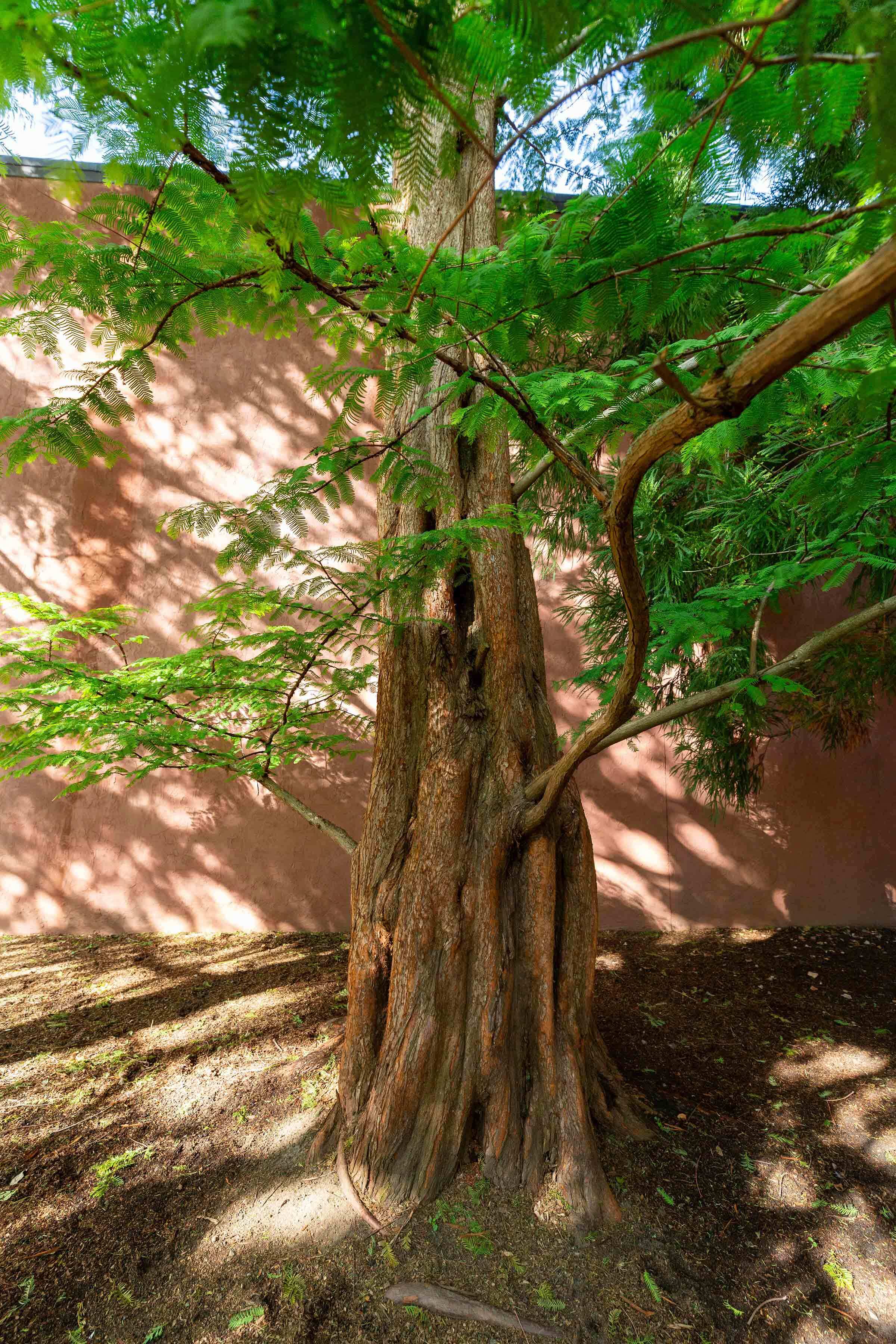
Dawn redwood (Metasequoia glyptostroboides), on the Axelrod walkway, Peabody Essex Museum. Photo by Kathy Tarantola/PEM.
The Three Sisters, originating in several different Native American communities, involves a mutually-supporting arrangement of corn, beans and squash. PEM also boasts several heritage grape varieties, introduced to the museum in 2022 by J. Stephen Casscles, author of Grapes of the Hudson Valley. Veggies are given to staff members. And neighbors are welcome to take apples as long as they are at ground level.
When the crowds get to be too much this fall, the gardening team suggests grabbing a corner of a bench at Ropes Mansion or going across the street from the Hawthorne Hotel and enjoying the shade of the lawn at the Andrew-Safford House.
“Or you can go inside the museum, get a break from the hustle and bustle of outside, and then go to the expansion garden and get nature back there,” says Pydynkowski, referring to PEM's serene 5,000-square-foot garden that offers a mental and acoustic break from the museum experience. Designed by Nelson Byrd Woltz Landscape Architects, this award-winning three-room garden space reflects the meeting of East and West during the era of maritime trade. The garden features both North American and Asian plants, along with an 11-foot cascading water feature.
Designed by Nelson Byrd Woltz Landscape Architects, New York. Museum garden and fountain, 2019. Peabody Essex Museum. Photo by Bob Packert/PEM.
Gardening is hard work, but our crew doesn't mind. And with the new resources at hand, they love planning each year’s colorful blooms.
“It's ever hopeful,” says Pydynkowski. "Come winter, come January, when that snow's flying and you're tucked in that greenhouse, everything's hopeful.”
Want to lend a helping hand to PEM’s green spaces? Consider becoming a garden volunteer.
Related posts
Blog
‘Beyond words’: PEM’s garden team shares excitement over new arboretum certification
8 Min read

Blog
The constant gardener
4 min read
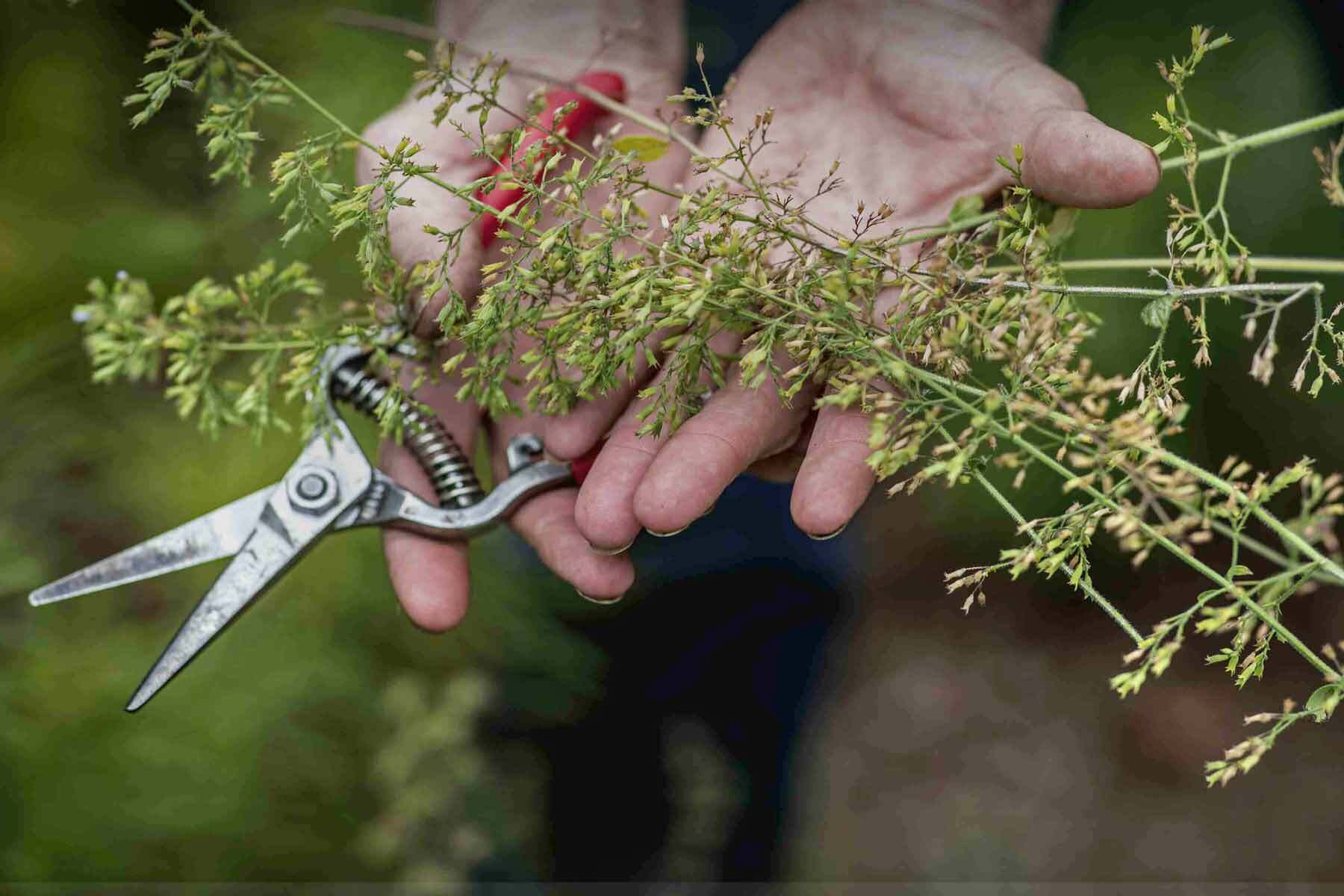
Blog
Advocating for Agriculture With PEM’s Gardeners
3 min read
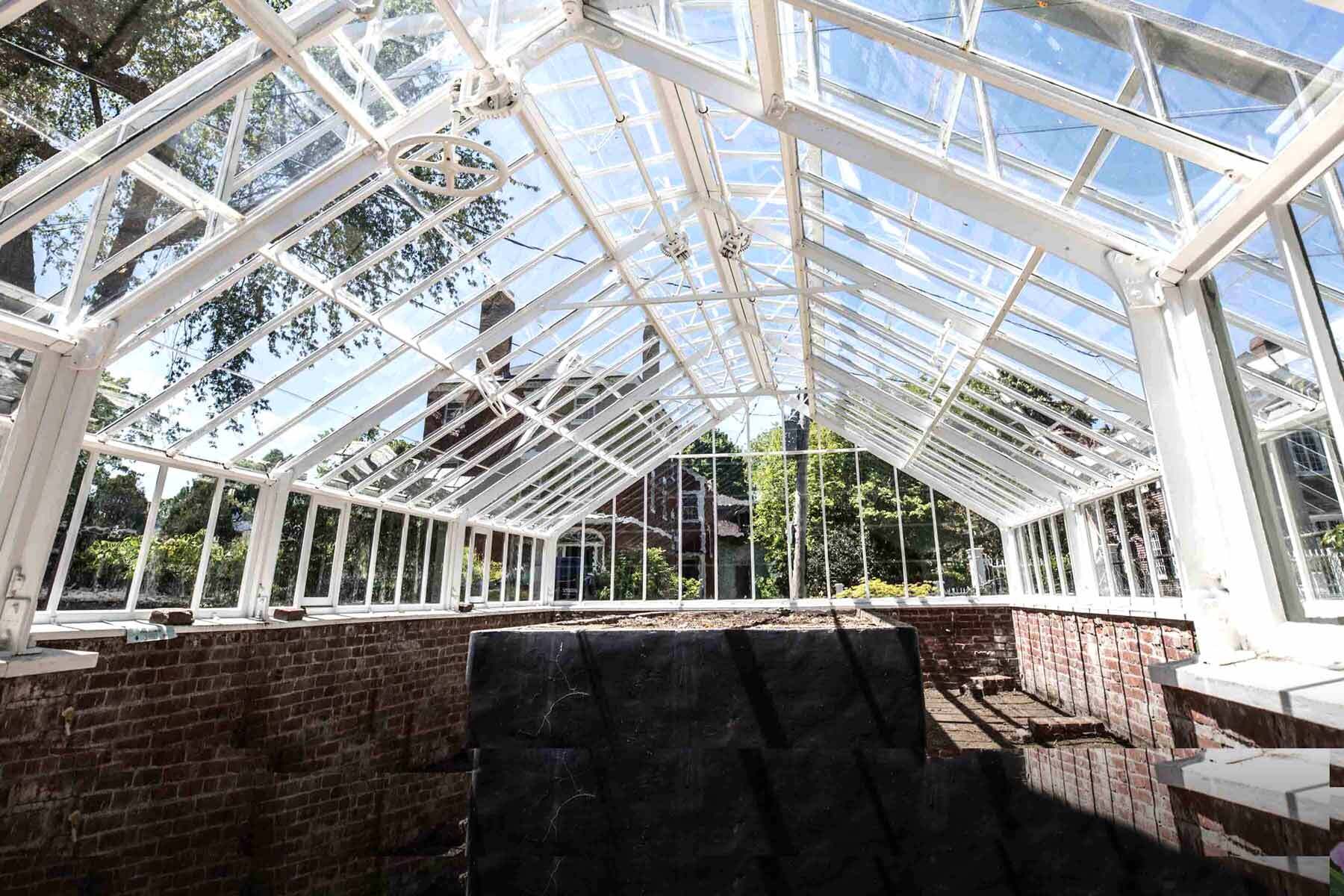
Blog
Efforts underway to assess health of copper beech tree in Ropes Mansion Garden
6 min read
